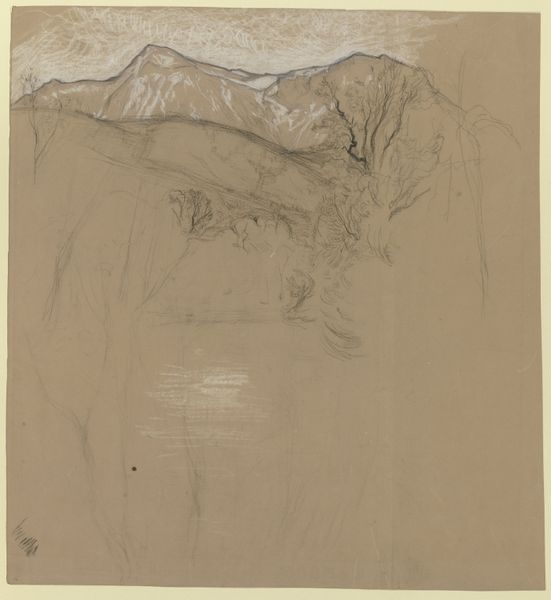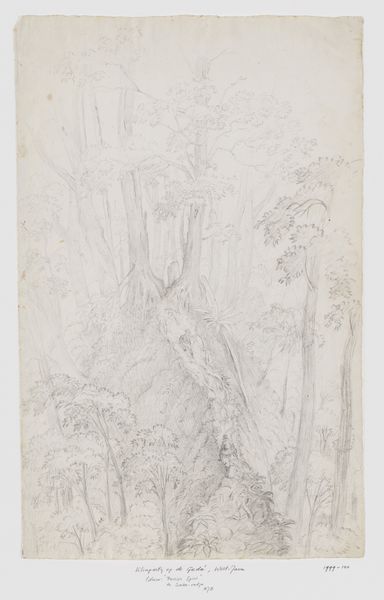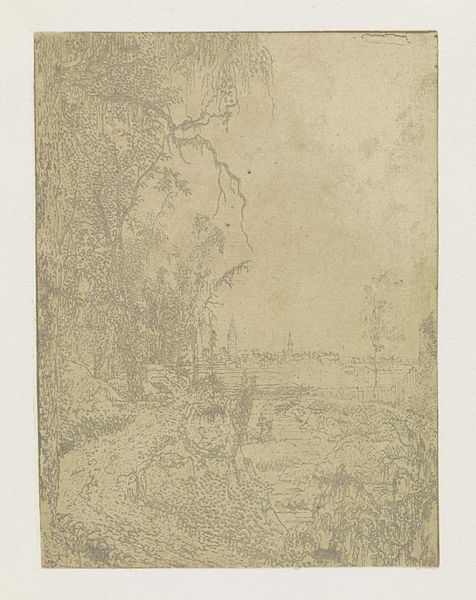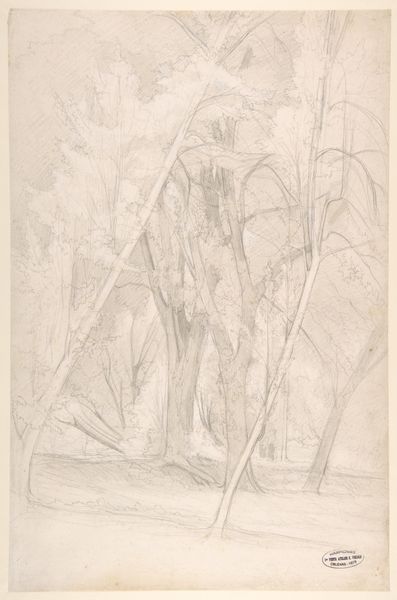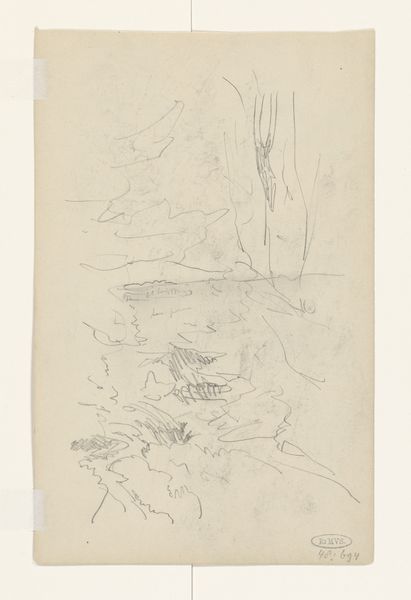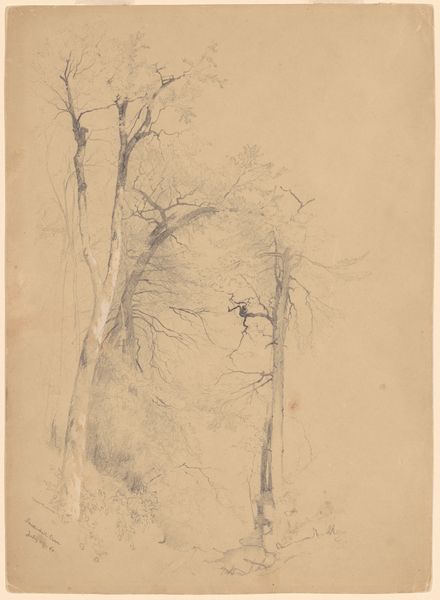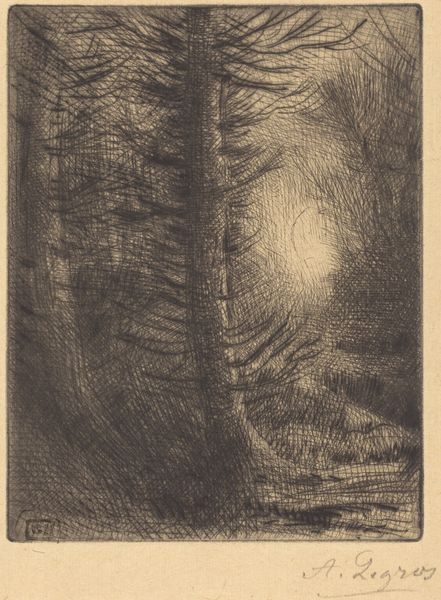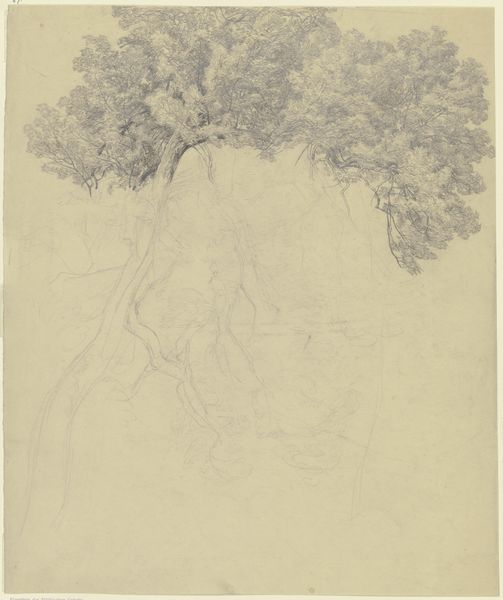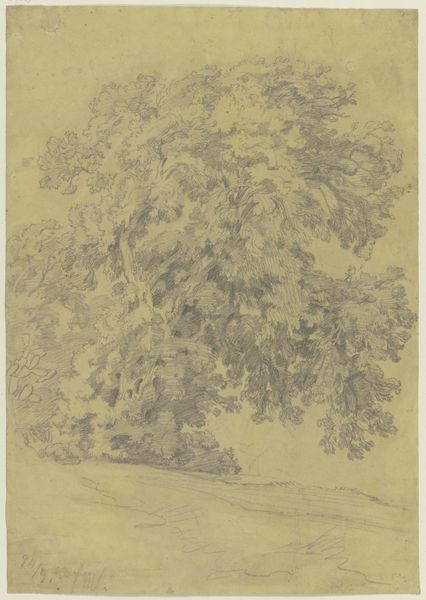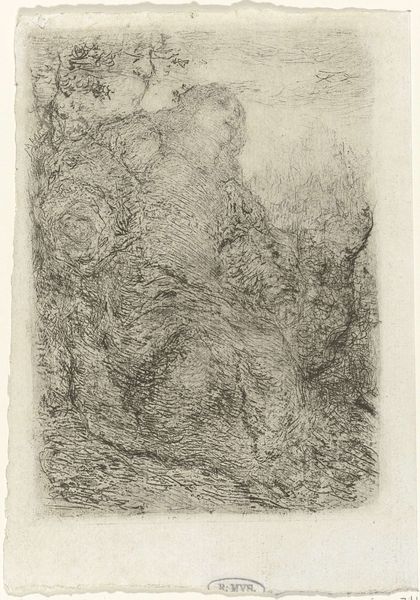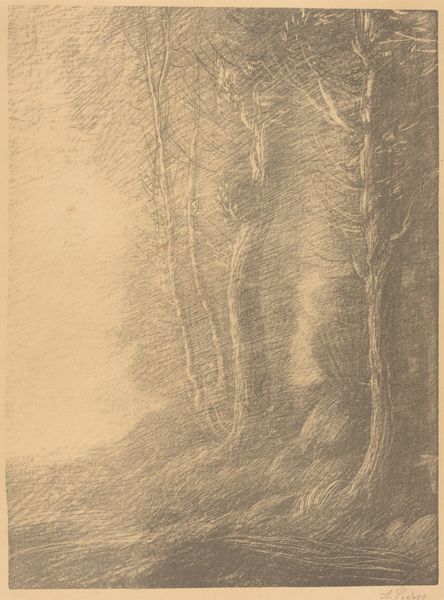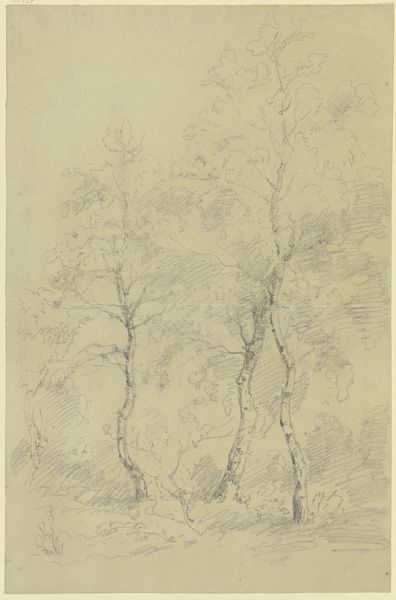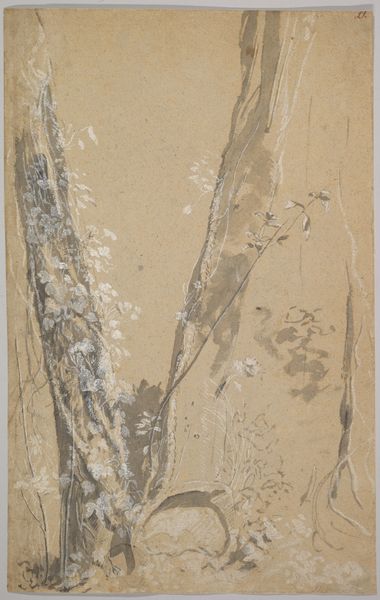
Copyright: Public Domain
Editor: We’re looking at Peter Becker’s "Forest Section" from 1852, a delicate pencil drawing. It’s incredibly detailed, but also feels a bit unfinished, almost dreamlike. What strikes me most is its stillness. What can you tell me about how this drawing might fit into the art world of its time? Curator: A seemingly simple drawing of a forest interior can actually tell us a great deal about the evolving relationship between art, nature, and the public in the mid-19th century. Consider how landscape painting had risen to prominence, often seen as a reflection of national identity and the sublime power of nature. But Becker takes us into the forest itself, focusing on a seemingly random section. Do you think this "section" approach suggests something about accessibility to nature or about viewing practices at that time? Editor: Perhaps. It feels less grand than traditional landscapes; more intimate. I'm wondering if the ‘unfinished’ quality and focus on a single "section" might relate to the growing middle class having more access to both nature and art but through limited means, like a quick study sketch instead of a large oil painting? Curator: Precisely. Also consider how industrialization was rapidly changing the landscape. Artists began to idealize untouched nature. This work fits within that social and cultural context, reflecting a desire to preserve, record, and perhaps even control, a disappearing natural world. Becker's technique, detailed yet restrained, conveys that sense of reverence and maybe even a little unease towards those forces shaping their world. It definitely mirrors many social concerns about encroaching civilization at the time. Editor: I see it now! What initially looked like a simple drawing reflects those larger societal anxieties about industry versus nature. That changes how I view its place in art history! Curator: Absolutely, seeing it as a product and a reflection of larger historical forces helps to bring it to life. Now what might someone who encounters this drawing today, in a museum setting, think about it?
Comments
No comments
Be the first to comment and join the conversation on the ultimate creative platform.
